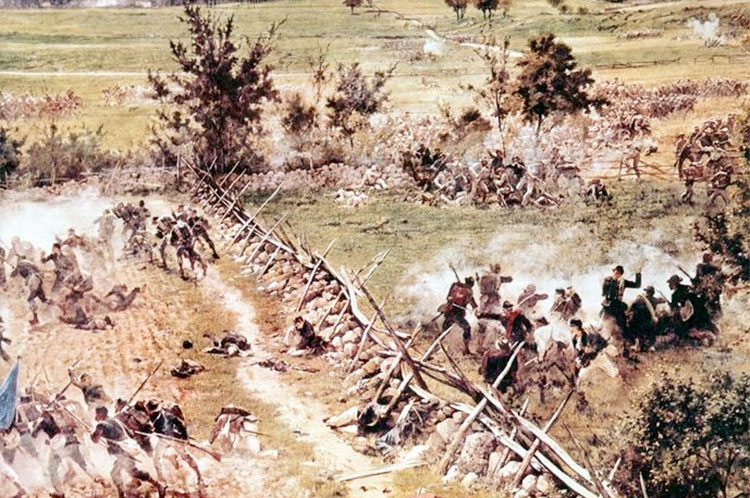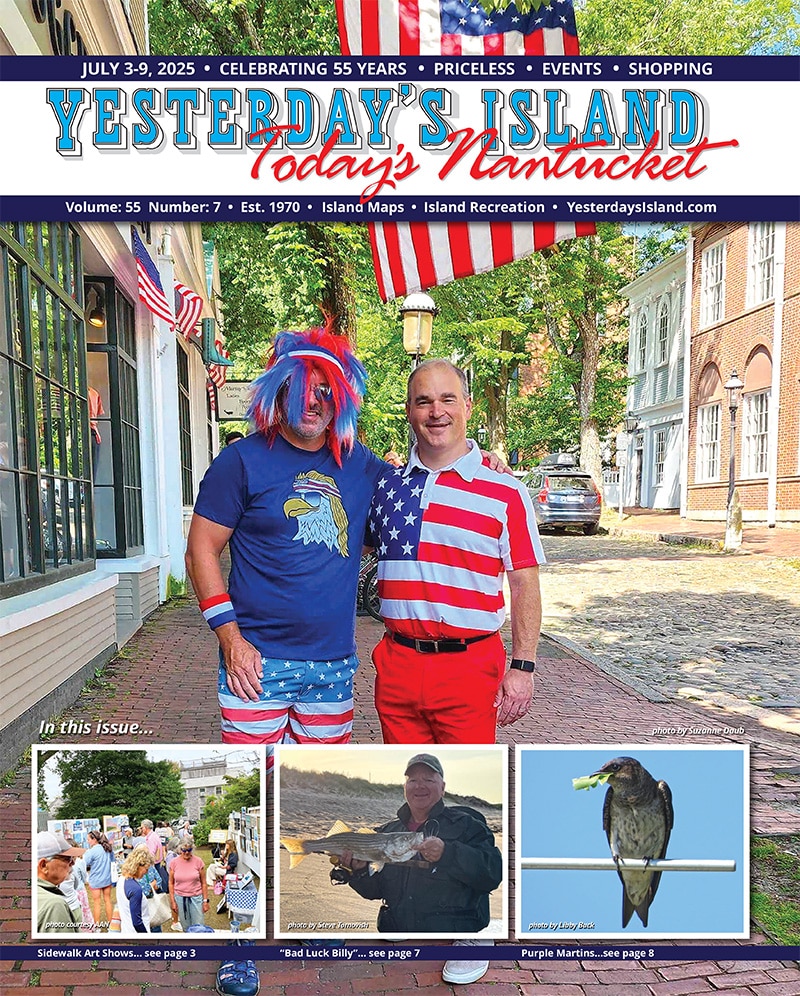• by Robert P. Barsanti •
In April, we fled south in search of spring. Up here in God’s Country, Massachusetts, the leaves and flowers only come out when the promise of one more blizzard has passed away. Some years, on Nantucket, the flowers feel confident sometime in late February. During most springs, the green only comes after the constellations have changed and the storms go spinning out to sea three hundred miles to the east.
April is the cruelest month. Forty degrees and windy has stretched out into its sixth month and 180th day. The trees in front of the house remain skeletal shadows, the swamp silent, and the grass gray and lifeless; yet the hope for snow is gone. Every storm brings wind, rain, and a damp that the polar fleece cannot wick away. So, this April, I plucked the youngest son off the island and drove him to a place where the trees were in bloom and the grass had been green for weeks.
Now, the youngest son has reached an age when trips can’t just be for pleasure. Our days of whiling away the hours in water parks and play grounds had eased to an end. Instead, his trips needed to be educational. Educational for a child from Nantucket has two meanings; he should learn about history and he should learn about life in America. We had explore life in America, rich in highways, diners, and elevators. We needed to find whoopee pies, scrapple, and birch beer. Beyond the snacks and annoyances of mainland living, I felt he should know a bit about history. In my most paternal, I felt a foundation needed to be built for his future, so our trip south aimed at three of America’s bloodiest battlefields: Gettysburg, Antietam, and Harpers Ferry.
Now, I undertook his education in war as seriously as I could. On the night before we began driving, we watched the Ken Burn’s episodes on those three battles and I took away his phone so that he wouldn’t be distracted. Then, on our way south, we listened to The Killer Angels in the car. By the time we pulled into the Gettysburg hotel, he had been steeped into heroism of Chamberlain, the foolishness of Stuart, and the audacity of Lee. I did my best to build up our ghosts in the grasses.
We started out early in the warm Pennsylvania mist. We toured the Gettysburg battlefield with an official and experienced guide. The young man watched the grazing land and the corn stubs while we pestered the guide with questions about canister versus grape shot and other details about the artillery of the moment. We stood at the crest of Cemetery Hill with Meade and imagined withering cannonades through the empty fields. Thousands died before us amid all of the buses and monuments clustered. “That red barn,” our guide intoned, “would be the range of one set of cannons.” We sighted along its lines and imagined cannonball after ball landing amid the rebels. The young man took a picture.
We paused for ice cream, then returned to the battle. The three of us endured the cyclorama and the film, then dawdled through the museum of letters, weapons, and maps. We stood, for a moment, in attention at General Lee’s coat and the hair from his horse, Traveller. Somewhere in the deepest science labs of the south, someone is hoping to bring the legendary horse back to life from those fragments of DNA.
We wound up back at Little Round Top and Devil’s Den. You can’t stand at the bottom of Little Round Top without thinking about what a perfect spot that was for a set of cannons. The ridge follows gently up to the town. The bravery of Chamberlain, the difficulty of all the rocks, the shear ugliness of the hillside loomed.
And yet, the young man took to the rocks for some leaping and hiding. He followed the dirt paths of others before him, amid the rocks where the sharpshooters hid and amid the piled up corpses of the dead. He jumped from rock to rock, ran through the passage ways, and ignored the ghosts that clustered around him.
I was keenly aware of the First Texas Regiment battling the 124th New York until the 40th New York forced the Confederates out. The Young Man was not. He saw rocks and hiding places, boulders to climb and passages to duck into. I let the ghosts fade into the dirt and saw what he saw; a jungle gym of rocks, a steep hill covered in boulders, and long fields of grass.
The grass always wins. Every battlefield returns to the farm. Cows wander where soldiers walked abreast and fell to that lethal canister. Some of the dead were dragged to graves, some were left were they fell, and then the rain came, and the winter, and then the grass grew. All 1328 monuments at Gettysburg float momentarily over the grass. They will settle into the dirt, as did everyone who died there. And in the end there will still be the grass.
The job of a monument is to keep the name fresh. Buford. Lee. Longstreet. Chamberlain. Names are all carved deep into the marble. But each name fades with the years and the rains, and each marker sinks a little bit more into the grass. Each generation forgets another set of heroes. This is as it should be. The triumph of the soldier is to be forgotten. The causes and the conspiracies should settle into the history books and the patter, and society should advance. Boys should leap over the stones where men died.
Nonetheless, the truth of our nation is that it was built and rebuilt on stone markers. In the late afternoon, the young man and I stood where Lincoln made his address. We were ringed by anonymous markers from state after state; but the markers hid deep in the grass. We stood upon the honored and bloodied dead, in a world built upon them. The foundation of a country of highways, hotels, and heart was built on these granite markers. The young man’s eyes and my old ones unite at that. I can see the grass amid the ghosts, and he can see the granite in the grass.



